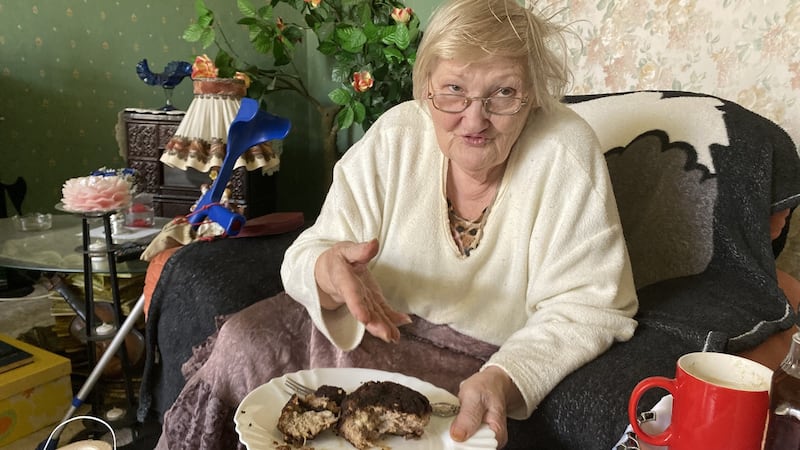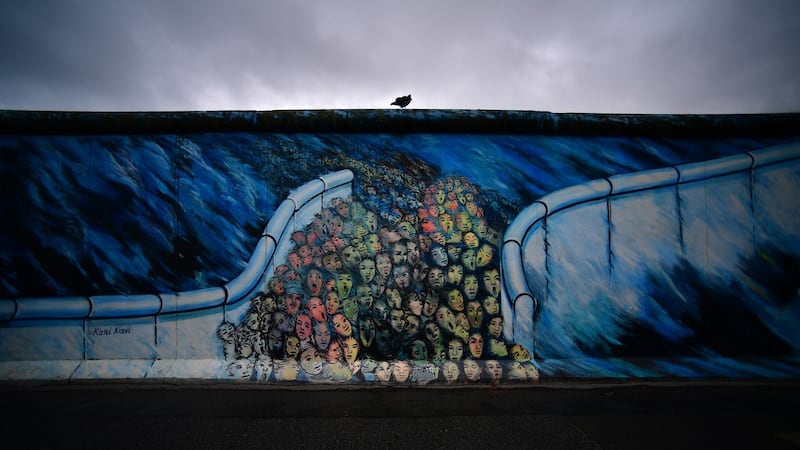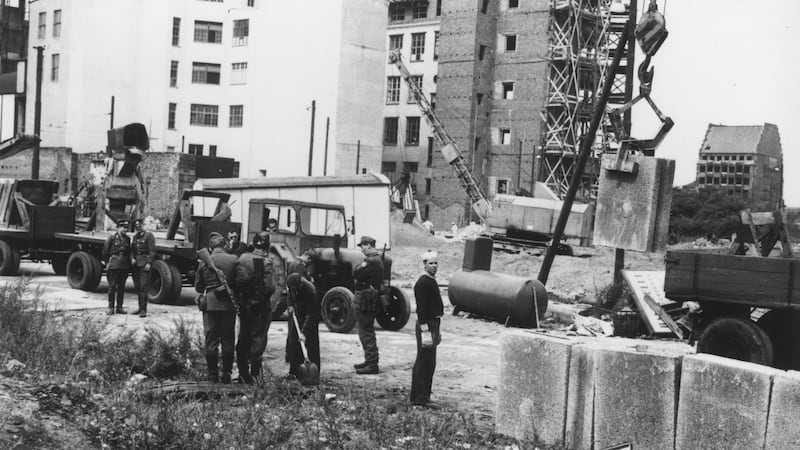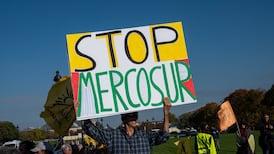The simplest way to distinguish a real Berliner from a blow-in is to ask them how the city has changed in the last 30 years. The blow-in will launch into a detailed, subjective narrative about the ups and, more likely, downs of the united German capital.
How things have gone to the dogs: the tourists hordes, the aggressive traffic, the spiralling rents, the airport that may never open. But when they talk of their better Berlin – perhaps 30 years and 10 kilos ago – you soon realise they are mourning less the loss of a city than their youth.
Ask a real, dyed-in-the-wool Berliner then how the city has changed in the last 30 years, and they are likely to fix you with a crooked gaze that says: what sort of a question is that?
Berliners have been through heaven and hell in the last century and have learned along the way that, in Berlin, the only constant is change. Expect the unexpected, and adapt accordingly. That’s how you survive in Berlin.
A far better question than what has changed is what hasn’t changed in the last 30 years. Berlin buildings come and go in the night, but the Berliners stay and rub up against each other with a unique blend of apathetic tolerance.
Without realising it, they still live today by the 300-year-old wisdom of their philosopher king Friedrich II: “Jeder soll nach seiner Façon selig werden” – Everyone should be happy in their own way. Even if, as I saw last week at the Brandenburg Gate, it involves a man posing for hours in the cold wearing nothing but a small elephant soft toy to cover his vital parts. The tourists tittered and snapped photos, the Berliners carried on.

The Wall
The Berlin Wall is almost completely gone, save for a few tourist spots, but other things that define the city remain unchanged. Like the non-existent Sperrstunde, closing time for bars. That was abolished 70 years ago this year meaning that, ever since, somebody, somewhere has always been drinking in a Berlin bar. That’s my kind of town.
It was more than 10 years ago in the pocket-sized “Minibar”, with room for about 15 drinkers, that I first encountered Inge Schulze and her tray of snacks. It was after 2am and my stomach was rumbling when, as if on cue, she appeared at the door to cheers from all of “Mutti!” – Mummy!
If Berlin is the city of black sheep, Inge Schulze is the shepherd. For 30 years she has restored revellers’ souls with her home-made bread rolls and boulette, a cross between a beef burger and a meatball. Schulze’s journey through the Berlin nightlife takes her to about 100 bars and brothels. Everyone knows the “Schrippenmutti”, loosely translated as Breadroll Bridie.

When I track her down during the daytime to discuss how Berlin has changed since 1989, she announces with typical Berlin directness that it is a stupid question – “after everything I’ve been through . . .” Nearly 80, Schulze remembers wartime Berlin as a confusion of bunkers, air-raid sirens, ruins and hunger.
She remembers the Soviet soldier who tried to rape her, and was shot dead by another in front of her. Since 1953 she has lived in the same sprawling 340sq m apartment in the northern Wedding district, with three massive living rooms to the front, two kitchens and other random rooms out the back, four cats and at least half a dozen cat litter boxes. She used to have two Alsatians, she tells me: rescued former Berlin Wall guard dogs.
Schulze still remembers the feeling of living adjacent to the Wall in West Berlin for 28 years: “It was a catastrophe, but what could I do to change things?” Like most people she got on with her life: got married, raised two daughters. As we talk, she chain-smokes thin Polish cigarettes and we enjoy her favourite drink: Turkish coffee, with whipped cream sprayed on top, drenched with brandy. Rudesheimer Coffee, she tells me, squeezing cream onto her third.
Her Schrippenmutti career began by chance, the day after the Wall fell. Like many Berliners, she went to bed and missed history happening on her doorstep. Only when she reached work in a butcher’s shop off the West Berlin’s Kurfürstendamm shopping boulevard did she learn why the city was so crowded.
A process of gentrification and population replacement that began 30 years ago in eastern Berlin is now reaching its climax in the heart of old West Berlin
That evening she stopped off on her way home in her local pub, directly up against the Wall. Revellers inside had been there all night and day, including an East Berlin family.
“They told me they were starving so I gave them the cold cuts I’d brought for my dinner,” she said, and organised bread rolls from a nearby Turkish bakery. The Schrippenmutti was born. “I don’t know who gave me the name but it’s fine by me,” says Schulze.
Like all Berliners, particularly of her generation, life has been constant change and survival is about not reflecting too much on the war or the Wall. “If I’m honest, the Wall anniversary is all the same to me,” she says.
“I’m more interested in having my hip fixed so I can go out again on my rounds.”
Never one city
Even before the Wall turned one Berlin into two, there never was just the one city. Like Germany, a collection of kingdoms and principalities knocked together in 1871, Berlin is a belated arrival. Dublin was already at least 250 years old when Berlin was first mentioned in a document dating from 1287.
Another six centuries passed before the towns, villages and swamp of Brandenburg were pulled together into its current form of Groß-Berlin, greater Berlin. No one knew then, in 1920, that Groß-Berlin had just 25 years ahead of it, buffeted by dictatorship and war, before it was divided up again into four sectors of occupation.
In 1945, the western co-operation with the Soviet Union turned into chilly geopolitical standoff. The US, British and French occupying forces pooled their areas to form the allied zone, known later as West Berlin. In the subsequent four decades it existed on subsidised life support, a capitalist outpost surrounded on all sides by East Germany and its socialist sister, East Berlin.
Walking or cycling the city today, it’s increasingly difficult to even imagine the division – and the hardship. The priority after 1989 was not to preserve the division but to erase it by knitting together infrastructure, filling in the gaps in the streetscape, and moving on.
Berlin is always becoming and never being, the local wisdom goes. That’s what makes life so interesting here: never knowing what the current Berlin is becoming. Driving by sight is second nature to the Berliners – and an essential skill for blow-ins.
Galway-based poet Eva Bourke is one of those. A regular visitor to Berlin for decades, she knows no one can push the pause button to preserve any one favourite iteration of this unwieldy city. But she is growing ambivalent about how her second home is developing in Kreuzberg, West Berlin’s old alternative neighbourhood. Visiting her street and her century-old apartment block is to witness first-hand Berlin being squeezed between two fronts.
Stick your head out her front room window and look left, you can see encroaching mass tourism. Where there was one restaurant-bar on the street when she arrived in 2004, now there are 20 – almost all tourist spots. After many happy summers here with her late husband Eoin, a professor at NUI Galway, Burke sees the neighbourhood falling victim to the same market forces that homogenised Munich, Dublin and Galway.
Turn your head and look right from her front room window and you can see, where there was once a train station, an oblong green-space called Görlitzer Park.
For decades it was a freewheeling place of family parties and open-air fun. Then five years ago, when the first young African men began loitering on the corner, Bourke wrote a poem, Berlin Nocturama, about these “masters of waiting”, who chatted quietly or listened to music on their phones.
"The fireflies of their cigarettes
dance around them
going on and off."
Their number swelled with the 2015/2016 refugee crisis and now many corners have clusters of men, many selling drugs to Berlin’s swollen army of party tourists. Growing dealer competition has increased pressure to sell, meaning the men offer drugs to everyone passing by: German mothers, Turkish pensioners, local schoolchildren.
The Berlin motto – Everyone should be happy in their own way – is developing structural cracks in this most left-wing of neighbourhoods and many of Kreuzberg’s ageing student revolution generation are unsure what the future holds. Locals know these people from Africa are in a terrible situation – most are illegal and can’t get jobs, yet face pressure to send money home to their families.
But Kreuzberg nights’ streets have a new soundtrack: drunk, shouting tourists and drug dealers, often their own best customers, playing loud music and fighting rival gangs in drug turf wars. “Little by little it wears you down and makes you angry,” says Bourke, “and I don’t like that. I don’t want to be angry at the black guys.”
She’s lucky, she says: she can escape back to Ireland. But her neighbours are trapped in what was once the end of the western world, in the shadow of the Berlin Wall. Now they are in a desirable neighbourhood in the heart of Europe, caught between mass tourism, global migration and a third force that is less visible but equally merciless: the squeeze of globalised capital.

Who owns Berlin?
From a decades-old low base, Berlin rents are rising exponentially. Rents in Kreuzberg have risen 114 per cent in the decade to 2018; next door in Neukölln it’s 146 per cent, largely fuelled by the euro crisis and the low interest rate after-effects.
But salaries haven’t kept up with rents and many Berliners feel powerless because they cannot afford to buy. The median monthly salary here is €3,024 before tax, already below the national average. And that drops steeply to €1,600 before tax for the armies of Berliners working in gastronomy and old-age care.
Three decades after the Wall vanished, a new socio-economic division is under way. A process of gentrification and population replacement that began 30 years ago in eastern Berlin is now reaching its climax in the heart of old West Berlin, with ordinary people squeezed out of their city centre homes, replaced by new international tech nomads and wealthier western Germans.
Eva Bourke is proud that her Berlin neighbours are not going without a fight. Though still torn between tolerating and tackling drug-dealing, the old Kreuzberg protest culture has surged back into life to push back against tourism, investors and multinationals. As a result, an interesting shift is under way as the united city celebrates its 30th birthday.
With the rent cap most Berliners will be heaving a huge sigh of relief
After three decades of transformation and embracing “normality”, throwing up one look-alike shopping centre after another, Berliners have hit the brakes. Its residents have forced the city state to address a fundamental question: “Wem gehört Berlin?” – To whom does Berlin belong? The highest bidder? The visitors? Or Berliners?
The locals are trying to take back their city, with interesting results. Last year, when Google planned to open a headquarters in an old canal-side transformer station in Kreuzberg, it met huge protests, making clear it wasn’t welcome. Next in Kreuzbergers’ sights: institutional property investors. A looming referendum, if backed by Berliners, would force the city-state government to disappropriate large-scale, publicly-owned landlords. The city has also agreed new rules giving it first refusal over apartment blocks put up for sale.
Perhaps the most far-reaching move, agreed by the local city-state government last week, promises relief for Berlin tenants – and 85 per cent of Berliners are tenants – in the form of a rent cap.
Bourke sees it as a timely pushback against the last years. “Word spread quickly a few years ago as far as Ireland about Berlin being quite cheap and now it’s a place people to come to live it up – but it’s the locals who have to live with the consequences,” she says. “The rent cap could be a life-saver for many people.”
Property boom
The woman behind the rent cap works in Berlin’s state ministry for building and planning. Sitting in a meeting room, with a view over the city, building minister Katrin Lompscher is in fighting form. She is a member of the Left Party, successor to the Socialist Unity Party (SED) that built the Berlin Wall and ruled East Germany until 1990.
Today, Lompscher says she is struggling to correct the mistakes of her political predecessors through Berlin’s three phases of post-unification development. The first wave of post-unification euphoria was a bubble of property speculation, driven by construction cowboys, combined with local delusions that Berlin could, overnight, once again return to the big leagues alongside Paris, London and New York.
Bad quality buildings sprung up and sold for silly prices before the bubble burst in the early 2000s, thanks to the new economy collapse and a local corruption scandal involving politicians, developers and a state-owned bank. Stage two began when, in a tale familiar to Irish ears, Berliners were saddled with more than €60 billion in socialised debt.
You can't keep inflating property prices where the price bears no relation to the piece of property on sale, just because of hype
To pay those debts, the then city government of Social Democrats (SPD) and Lompscher’s party, sold off 200,000 social housing units, claiming they were surplus to requirements in a city with a shrinking population. At that time, Berlin was still the big easy, where the laws of the market appeared not to apply. Tenants could choose their location, and haggle down the rent and perhaps even extract a free fitted kitchen from desperate landlords.
As stage two drew to an end around the year 2000, the tables began to turn between landlords and tenants as the net population increased again; it is currently growing by 40,000 annually. In stage three the students and artists, attracted by the low cost of living in the past decades, were joined by older Germans downsizing from bigger homes in suburbs or smaller cities.
Adding to the mix were German firms based in Stuttgart or Frankfurt. They realised they had to open up Berlin branches to attract new staff. Add politicians, journalists, bankers and international tech firms and, in the last decade, Berlin began filling up – fast.
“We were absorbing a small city each year and no one noticed, but eventually we came up on our infrastructure limits: in housing, social services and transport,” says Lompscher.
The Berlin boom became even boomier when, in parallel with the euro crisis, German and international capital seeking a safe haven found in Berlin a capital underpriced by European standards. Investors from Dublin to Düsseldorf began buying wholesale and flipping their investments a short time later.
The last decade has been a cultural shock for Berliners, used to subsidised housing and a lax property market. Berlin’s unusual Cold War status meant half the city was subsidised as a capitalist outpost, while the other was a subsidised socialist showcase. These are a people unfamiliar with the idea, normal in any other capital, that the laws of supply and demand make inner-city living an expensive privilege.
Radical intervention
Today, the housing market is frozen. Anyone with an apartment in a good location, even if it is too small for their needs, is afraid to move in case they cannot afford the next one.
That means new arrivals, from low-income welfare recipient to cash-rich tech hire, cannot find anywhere to live because not enough apartments are becoming available, or being built. “We have a particularly dramatic housing situation and existing instruments are only half-effective, so that’s why we think we need a radical intervention,” says Lompscher.
Her radical intervention, the so-called rent cap, is scheduled to come into force early next year but will apply retroactively to last June. It limits rent increases to the rate of inflation and allows tenants paying excessively high rents to demand a reduction based on a new citywide rent table, dating from 2013.
This table, from when Lompscher said was “the last time Berlin’s housing market could be described as balanced”, limits rents to a maximum of €9.80 per square metre (meaning €980 excluding utilities for a 100sq m apartment). Landlords who violate the rent cap will face fines of up to €500,000.
Property owners and the centre-right opposition have launched constitutional challenges against the measures, saying it curtails their property rights, but such challenges could take years to get through the courts. The Berlin proposal, though yet to come into effect, has attracted attention across Germany. A survey this week found 60 per cent of Germans want a similar proposal where they live.
For Berlin, this is all a new departure: away from the post-unification idealism and free-wheeling market capitalism. Instead Berlin’s left-wing city government of SPD, Left Party and Greens have acknowledged growing public unease and deployed its considerable competences as a federal city-state to push back against neo-liberal assumptions about housing.
The outcome is far from certain but even estate agents admit quietly that the time had come to release pressure from the Berlin property bubble.
“You can’t keep inflating property prices where the price bears no relation to the piece of property on sale, just because of hype,” says Anne Riney, Irish property agent based in Berlin since 1979. “With the rent cap most Berliners will be heaving a huge sigh of relief.”
Days of chaos
Riney, a Dublin native, came to Berlin 40 years ago and, like most long-term Irish here, didn’t intend to stay. But she did: intrigued by the walled-in island of West Berlin that attracted international artists and West Germans avoiding their compulsory military service.
Her new home was a place of long nights in bars where you could find yourself talking to a spy, or listening to an old Berliner tell of how, by war’s end, every dog or cat in the city had ended up in a saucepan. Riney remembers clearly the night of November 9th, 1989 and watching the television newsflash that the Berlin Wall, 10 minutes’ walk from her apartment, was open.
An East German official had misread a plan for a staggered border opening requiring visas, prompting easterners to rush to the crossings where overwhelmed border guards, with no orders, let people through. At the Wall that night, Riney remembers seeing some easterners coming over into West Berlin, but just a few steps, then hurrying back in case the border closed again.
“No one knew what was happening, people were pounding on the cars coming through, it was a mad street party, very wild and loud, with people everywhere,” she says. The following days were good-humoured chaos: long queues of easterners outside West Berlin banks, to collect their so-called “welcome money”, and equally long queues outside city sex shops.
For her, today’s Berlin is a completely different city to the one she moved to 40 years ago. But, as a blow-in turned native, she’s not nostalgic for the vanished past. “West Berlin was fun but it had run its course and was getting a bit dusty at the end,” she says. West Berlin was less about luxury than the sense of freedom and the resulting possibilities, she believes.
The real work – beneath the new paving, and behind the fresh facades – lies ahead
Post-wall Berlin is more about money. And though the transition in the last 30 years has been bumpy, the city is the better for it, she says. Through it all, though, she says the Berliners have remained a remarkably unchanged, open-minded and curious people. Her hope for Berlin in the next 30 years is to become a progressive capital: a smart, clean city for the 21st century.
“The problem is that everyone here has to get their spoke in,” she says. “And Berliners discuss everything for so long that, by the time they’ve agreed, the bus has gone.”
Back in her West Berlin days, Riney remembers asking West Berlin officials how many Irish were living in the walled-in city. The answer: 200. Today about 4,000 Irish live here, with most arriving over the last decade. Some come and go, others learn German, integrate and disappear into the woodwork.
Many have changed their adoptive city for the better: running pubs and restaurants, and a popular open-air karaoke show in a park on the former death-strip. On Sunday mornings, in a park near the former no man’s land of Potsdamer Platz, Berlin GAA clubs train children of all nationalities.

Photographer Ciarán Fahey is one of the new Berlin Irish. In the last years he has documented the rapid change in his popular blog and book, Abandoned Berlin.
With a second volume out soon, he notices the unique architectural legacy of war – cold and hot – is vanishing rapidly as abandoned villas and factories become renovated offices and lofts, often with no clue to a building’s historical upheavals and tragedies.
That historical amnesia, he suggests, reflects official Berlin. Its interest in historical events, sites and memories, suggests Fahey, is in direct proportion to how marketable they are for tourists.
“Remembering the fall of the Wall is very much a money-driven marketing exercise to bring guests to Berlin,” he says. “The city is taking advantage of that while not wanting to be seen to be taking advantage.”
Anniversary
At a press conference beside the Brandenburg Gate, too many people in too small a room are gathered to hear the big sell for this year’s 30th anniversary party.
Berlin’s culture minister Klaus Lederer says events will be focused on “freedom, and the courage of the people in 1989 who went out to protest, who didn’t know how it would end, who made sure that the East German regime collapsed peacefully”.
It’s certainly a change to hear words like that from someone such as Lederer who, like Katrin Lompscher, is a leading light of the Left Party, legal successor to the party that built the Wall. After Lederer, a series of shiny, excited event managers explain next Saturday evening’s Brandenburg Gate party as if it were a Las Vegas spectacular: a “dramatic arc” of “images and music to transport emotions and goosebump moments”.
Slipping out of the room for air, I wonder what the East German politburo would have made of it all. If Erich Honecker realised how profitable his wall would become as a tourist attraction, an inexhaustible source of marketable “goosebump moments”, might he have torn it down himself, years earlier?
I step out on to the second-floor balcony of the Max Liebermann House to take stock. Below me is probably the most historically scorched earth in the German capital. From here I have the same perspective as the original house owner, the painter Max Liebermann. In 1933, he looked down in horror at the mob marching through the Brandenburg Gate, celebrating the Nazi takeover.
The 12-year fascist dictatorship that followed destroyed Liebermann, his family and this building. In 1945, the war triggered by Germany ended here, with a defeated Berlin in ruins. Four decades of Cold War division followed as penance. The Brandenburg Gate, to my left, and the Reichstag, to my right were, like the wider city, separated by concrete walls for 28 years.
There is no trace of any of that now on the streetscape here, except for a discreet zig-zag of of cobblestones in the street. The tourists, the tidiness and the organ-grinder tune drifting up from below give a deceptive feeling that all is normal. But nothing is normal here.
This spot in Berlin, where east once met west, will forever be the ground zero of German history where another, joyous 9/11 happened: on November 9th, 1989.
Always becoming, never being, cranes on the horizon and the crunch of gravel underfoot mean Berlin is still building, 30 years on. But the real work – beneath the new paving, and behind the fresh facades – lies ahead. Working through the emotional trauma of decades of division is only beginning now. And that is more than enough work for the next 30 years.











